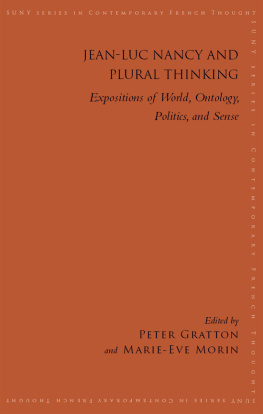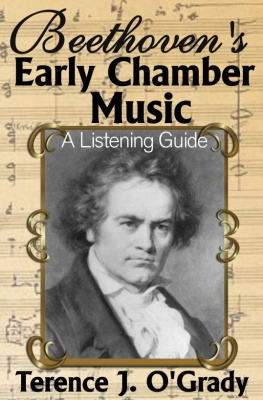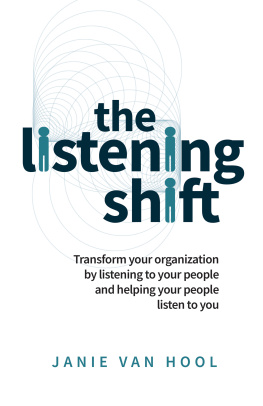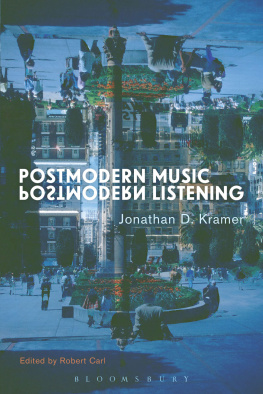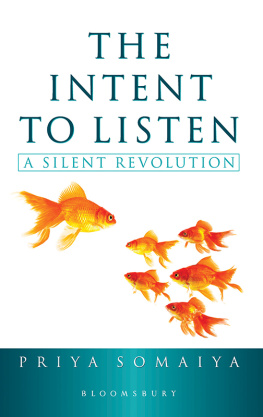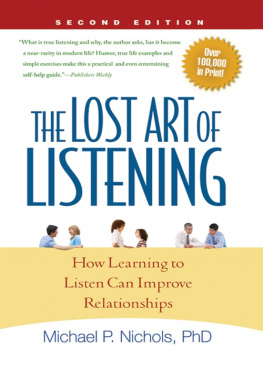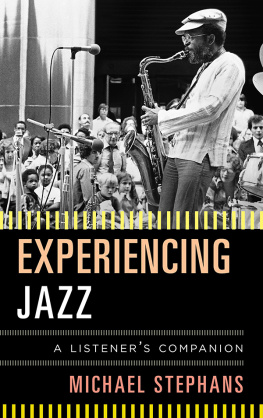LISTEN
PETER SZENDY
A HISTORY OF OUR EARS
LISTEN
Preceded by Ascoltando by Jean-Luc Nancy
Translated by Charlotte Mandell

Copyright 2008 Fordham University Press. All rights reserved. No part of this publication may be reproduced, stored in a retrieval system, or transmitted in any form or by any meanselectronic, mechanical, photocopy, recording, or any otherexcept for brief quotations in printed reviews, with out the prior permission of the publisher.
Library of Congress Cataloging-in-Publication Data
Szendy, Peter.
[coute. English]
Listen: a history of our ears / Peter Szendy; preceded by Ascoltando /
by Jean-Luc Nancy; translated by Charlotte Mandell.
p. cm.
Includes bibliographical references (p.) and index.
ISBN 978-0-8232-2799-0 (cloth: alk. paper)
ISBN 978-0-8232-2800-3 (pbk.: alk. paper)
1. MusicPhilosophy and aesthetics. 2. MusicHistory and criticism.
3. Musical criticism. I. Nancy, Jean-Luc. II. Title.
ML3800.S9613 2007
781.17dc22
2007046205
Printed in the United States of America
10 09 08 5 4 3 2 1
Originally published as Ecoute: une histoire de nos
oreilles (Paris: Editions de Minuit, 2001).
TO JULIE L.
CONTENTS
FOREWORD Ascoltondo
JEAN-LUC NANCY
Following the example of composers, who were never shy of inventing terms for tempos, and on the model of cantando or scherzando, reading Peter Szendy makes me think of the marking ascoltando: listening. It directs us to play while listening: while listening to what?What else but the music that one is playing?
It is immediately obvious that this marking could not have any specificity, since no instrumentalist plays any other way but while listening. What is playing, if not listening right through from beginning to end: to hear the score that is written so as to understand it, to examine it or auscultate it, taste it, then while playing it not to stop listening and experiencing the music that resoundsone could say sentire or feel it, still in Italian where the general term for sensibility or sensoriality also designates listening (so the tempo marking could also be sentendo).
Ascoltando is the secret direction for every musical performance. In music it designates an element in music that is never lacking in any phenomenon of sensibility, hence one that is not absent from any of the other arts, but that is brought out in all its fullness in music: it is the element of a formative repeat [renvoi constitutive], a resonance or a reverberation, a return to itself by which alone the self in question can take place. To feel is always also to feel oneself feel [se sentir sentir], but the subject who feels himself thus does not exist or is himself only in this feeling, through it and even actually as it. There is no subject that is not a sentient subject. No feelingno sensation, emotion, or sense in any sense of the wordthat does not on its own form the recursion or loop by which a subject takes place. Self is never anything but to self, in self or for self: it is never anything but a return, a reminder, a relationship, a transfer, and at the bottom of all this reversion an original, generative repetition, by which the to self occurs.
Sonority forms more than one privileged model for this return [renvoi] that precedes and forms every statement [envoi]of a theme, a sensing [sentant] in general. Sonority essentially resounds: it is in itself resonance. One could say that the echo is part of the sound, that it belongs to its immanencebut that reflection is not in the same way part of form or of visible color. Reflection requires a reflective surface, in principle external to the visible thing. Resonance is inside of sound itself: a sound is its own echo chamber, just as it is its own timbre, its overtones, and what is called its color. The ancient Greek kh, from which echo comes, means to make noise as well as to resound: it signifies precisely to return a sound. A sound is always returned, restored: it is restored from itself to itself. A sonorous body that is struck returns the blow by the sound that is the vibration of the blow itself. Sound is at the same time struck (pinched, rubbed, breathed, etc.), returned, and heard [entendu, understood] in the precise sense that it is understood [sentend] or that it makes itself heard [se fait entendre]: and for that, in that, it listens to itself [scoute].
But what is a subject that is thus constituted in listening, or as a subject that is ascoltando? It is no more the individual interpreting the work than the one who composed it or the one who listens to it: it is not even the union of these three people into one single entity, as very commonly happens when a composer plays his own music. The subject who is constituted in resonance, the listening-subject, is nothing else, or is no one else, but the music itself, more precisely nothing else but the musical
When Peter Szendy summons as he does, in a truly unprecedented and unheard of [inoue] way, all these examples or aspects of listening and hearing that include arrangement, plagiarism, quotation, variation, or reinstrumentation, but also the public concert, its stage and its echoes (the applause), as well as the diseased auditory nerves of Beethoven, then the proliferating register of all the instrumentations of modern listening that are at the same time conditions for reproduction, distribution, and resonance of music, and that can also become its conditions of production (DJ, mix)when he makes us lend an ear to our ears, which we thought we would never hear, his work of virtuoso performance in fact allows us to perceive an ample gearing down of the most original, most structural, and most dynamic realitythe most secret, tooof music. The figures of the listener, the arranger, the record, the headphones, are so many expansions or fragmentations of the single musical referral [renvoi]unique in its duplication, in its covering distance, and in its resounding within a perceptible space that it opens and that must always in fact, in principle, have the form or ideality of an ear and its pinna.
Pavillon, pinna: the meaning of this word in acoustics was formed by analogy with the form of a tent in the shape of a pavilionand this first meaning was connected with the wings of the butterfly [papillon]. There is the bell [pavillon] of a trumpet and that of the ear: one opening onto the other, the other resonating from the one. The one in the other, in short, and the one through the other: two solid embouchures, in contact with each other to form what listens to itself, that is to say a musical subjectand with it, something that could indeed turn out in the end to constitute nothing less than the subject of a subject in general.
By subject of a subject, I mean to convey both the pitch of a subjectivity or a subjectity [subjectit]: the infinite vanishing point of return to self, of folding-over or folding-back in which the self consists (and thus does not consist, but resounds and distances itself in itself from itself)and the theme of the subject, a theme that is asymptotically confused with its tonality as well as with its movement or tempo: this would be the theme and tempo, precisely, of the infinite distancing of proximity to self, of Augustines
Next page

